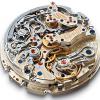Watch Sizes?
-
Recently Browsing
- No registered users viewing this page.
-
Topics
-
Posts
-
I find myself in a frustrating situation, and if I have learned anything yet it's that there might be a specific old tool to get me out of it. I am rebuilding an early grade Elgin 18 size full plate movement, just restaffed and installed a new roller jewel. Next I found that the pallet stones were loose and added shellac to them, reassembled but the watch does not run. Observing the escapement through the holes, it is clear the entry stone needs to move in slightly. So I know what I need to do at this stage, but I fully expect to need a few adjustments of one or both stones. I don't want to move the banking pins because it did want to tick before I noticed the pallets were not secure. Question is, on a full plate movement this is incredibly inconvenient to make a change, let the shellac harden, and reassemble the entire full plate watch in order to observe the escapement action. It can only be seen from the dial side through the small holes in the pillar plate, so even the balance must be installed in order to manually operate it from the back. Anyone know how this was done 120 years ago? Is there a tool or fixture that can be used for the job outside the watch? Depthing tool maybe? You all like pictures, so here are some. Final cleaning has not happened yet, thus the dirt and oil on the 4th wheel jewel.
-
Okay, I will try to help if I have enough knowledge to write a reply to someone or if I have information to share. Thank you so much for writing a reply. Have a nice day.
-
I think this is one of the two DVDs that I bought. I can't find them at the moment. I think the other one was "WORKSHOP PROCEDURES." Both were very worth watching. I remember a section on making lantern pinions that was excellent, and also a demonstration of cutting an internal ring gear. Not sure if that was on this disc or the other one. I expect you would find the DVD interesting if you have time to watch it.
-
By rjenkinsgb · Posted
It depends on the exact movement and jewel in that. If such a size is available to buy. Not impossible, but likely a small percentage of types overall. Most of the time it's more economical to buy a replacement plate or bridge from ebay; the tooling needed to replace jewels is expensive and probably rarely used, unless you are running a dedicated watch repair business. -
Yes every single watch in the universe can be repaired. But he was asking a question about getting a parts movement. So now you get the task of showing him how to repair the watch without getting a parts movement I'm sure it shouldn't be a problem at all for someone of your skill set
-








Recommended Posts
Join the conversation
You can post now and register later. If you have an account, sign in now to post with your account.
Note: Your post will require moderator approval before it will be visible.